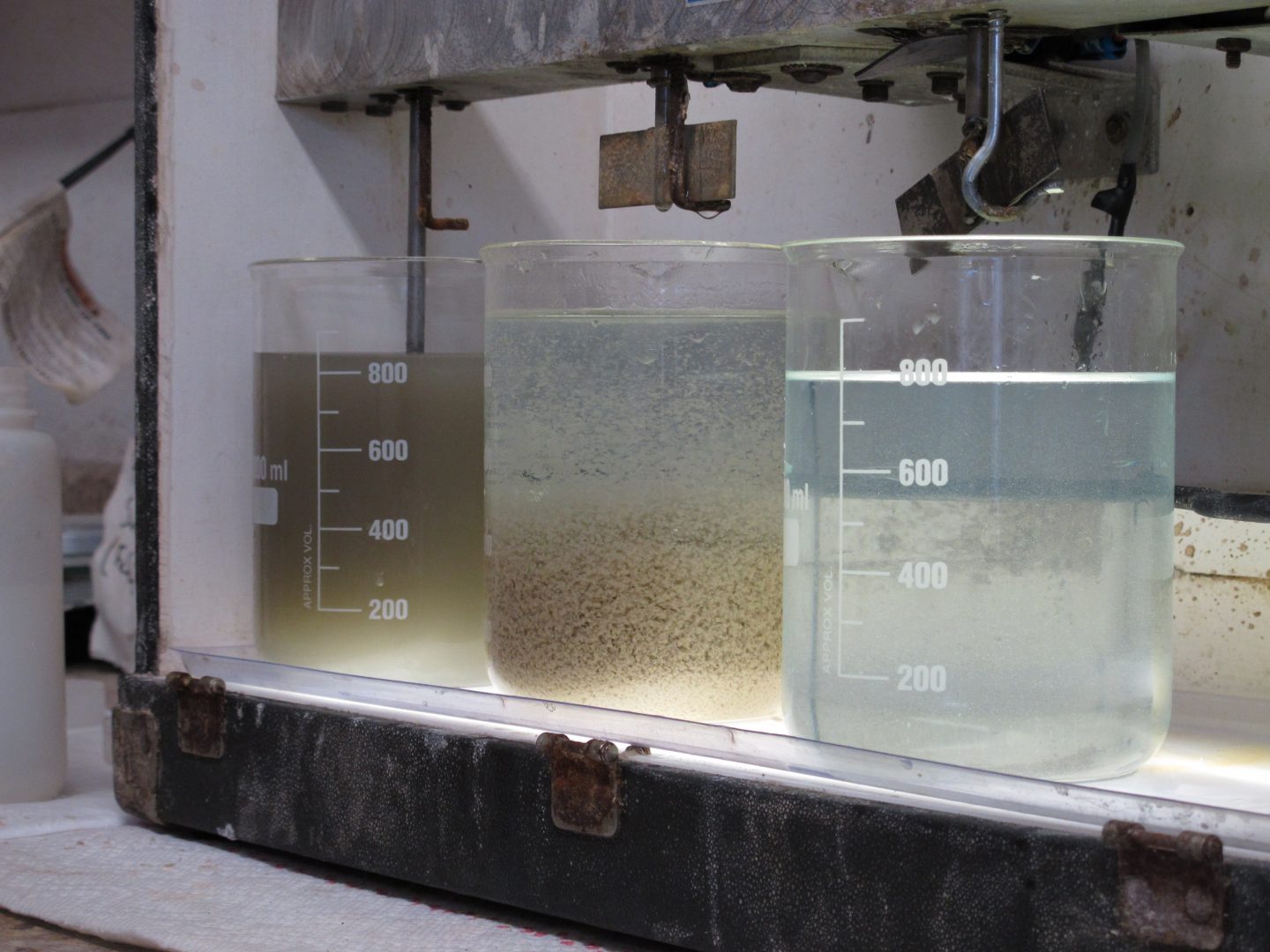
A look at fracking wastewater before, during and after the recycling process.
Scott Detrow / StateImpact Pennsylvania


A look at fracking wastewater before, during and after the recycling process.
Scott Detrow / StateImpact Pennsylvania

Scott Detrow / StateImpact Pennsylvania
A look at fracking wastewater before, during and after the recycling process.
The Susquehanna River Basin Commission (SRBC) regulates water usage in much of Pennsylvania’s natural gas-producing regions. The commission estimates each well requires 4 to 5 million gallons of water to hydraulically fracture (or frack). How much water is that? It’s approximately what 11,000 American families use in a day.
About eight to 10 percent of the water flows back to the surface. The wastewater, known as flowback fluid, contains clays, chemical additives, dissolved metal ions, and total dissolved solids.
Although the SRBC is charged with regulating water quantity, it does not regulate water quality. However, in 2010, the commission began real-time monitoring to observe the potential impacts of shale gas development.
A 2015 study by the commission states that with continuous monitoring between 2010 and 2013, researchers did not find any major changes in water quality, and with few exceptions, overall water quality was good.
The state Department of Environmental Protection lists 302 cases of private water supplies being adversely affected by oil and gas development. The DEP list includes shallower, conventional wells and modern, hydraulically fractured shale wells.
StateImpact Pennsylvania is a collaboration among WITF, WHYY, and the Allegheny Front. Reporters Reid Frazier, Rachel McDevitt and Susan Phillips cover the commonwealth’s energy economy. Read their reports on this site, and hear them on public radio stations across Pennsylvania.
(listed by story count)
StateImpact Pennsylvania is a collaboration among WITF, WHYY, and the Allegheny Front. Reporters Reid Frazier, Rachel McDevitt and Susan Phillips cover the commonwealth’s energy economy. Read their reports on this site, and hear them on public radio stations across Pennsylvania.
Climate Solutions, a collaboration of news organizations, educational institutions and a theater company, uses engagement, education and storytelling to help central Pennsylvanians toward climate change literacy, resilience and adaptation. Our work will amplify how people are finding solutions to the challenges presented by a warming world.